Last night, Becky and I went to see the movie Le Otto Montagne. It’s a movie based on the book by the Italian author Paolo Cognetti. I read the book earlier this year while I was enjoying my month of solitude in the Italian Alps. It’s no coincidence that I read the book in that location, because the story of the book unfolds not far from where I was staying.
That location is the Aosta Valley in North-East Italian, where the Italian peninsula meets Switserland and France. This is the valley where my family and I have spend one week each year for the last two decades. Almost four years ago, my parents purchased their own little place close to this valley, at the edge of the mighty mountain range. Their house is half way up the mountain and it looks out over the endless Po plains on one side and the pointy peaks of the Alps on the other side.
As you can understand, this made the story quite special to me. But apart from simply recognising the beautifully described scenery, the book also addresses certain themes that preoccupy me at the stage of my life. Questions about going or staying, about family, friendship, freedom vs traditions, community vs individuality, city vs countryside, and many more.

Image via The Writer’s Mountain Hut
The book
The book tells the story of the city boy Pietro that visits the rough, rural countryside of the Aosta Valley each summer with his family. He is a weak boy that is unsure what to make of the raw natural elements that surround him in the valley. Until he meets Bruno, a boy his age that is herding his family’s cows. Together they grow into this wonderful friendship that consists of exploring nature and old ruins. Building dams and climbing trees. Bruno is stronger and more practical, but soon Pietro can follow his lead easily. They form a great team.
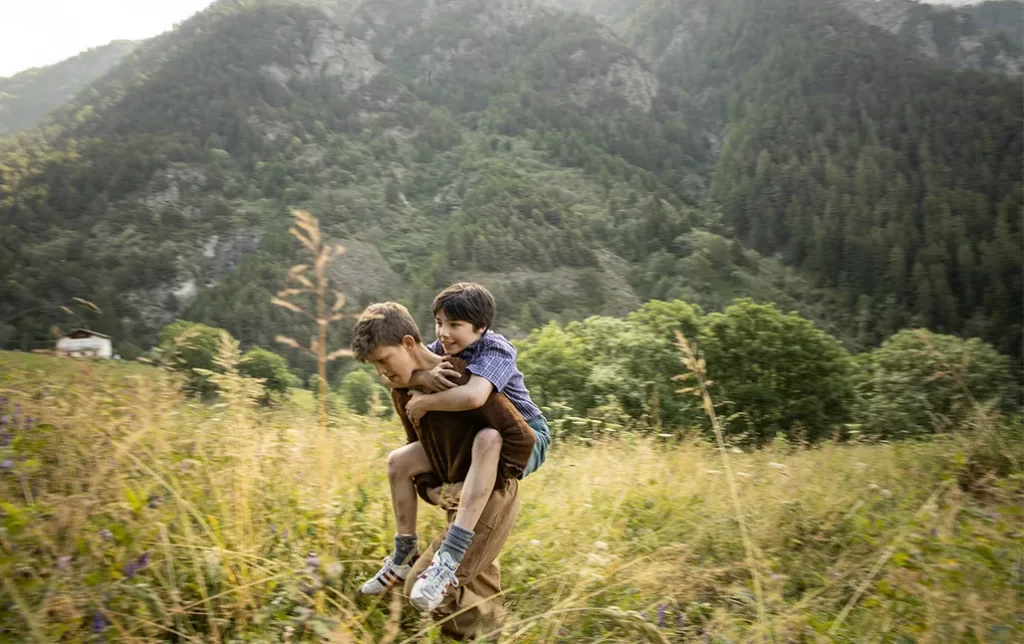
Bruno carrying Pietro – still image from the movie The Eight Mountains
Next to this beautifully blossoming friendship between the two boys, the book focuses on Pietro’s relationship with his dad. His dad is an engineer that works in a factory in Milan. He is not the most talkative person and he spends his days mostly working.
The only time his dad seems to come to life is when they go to the Aosta Valley in the summer. They spend several weeks there (although his dad usually joins a bit later due to work), and in those weeks his dad is very active. Constantly trying to find new peaks that he hasn’t climbed yet. He loves to hike up the mountains. He ascends them in a high pace, rarely taking a break, only vague nodding when he passes other hikers. At the top of the mountain he writes down his name in the little logbooks and then he makes his way down again. Not taking too much time to enjoy the view. But he is very happy in these moments.
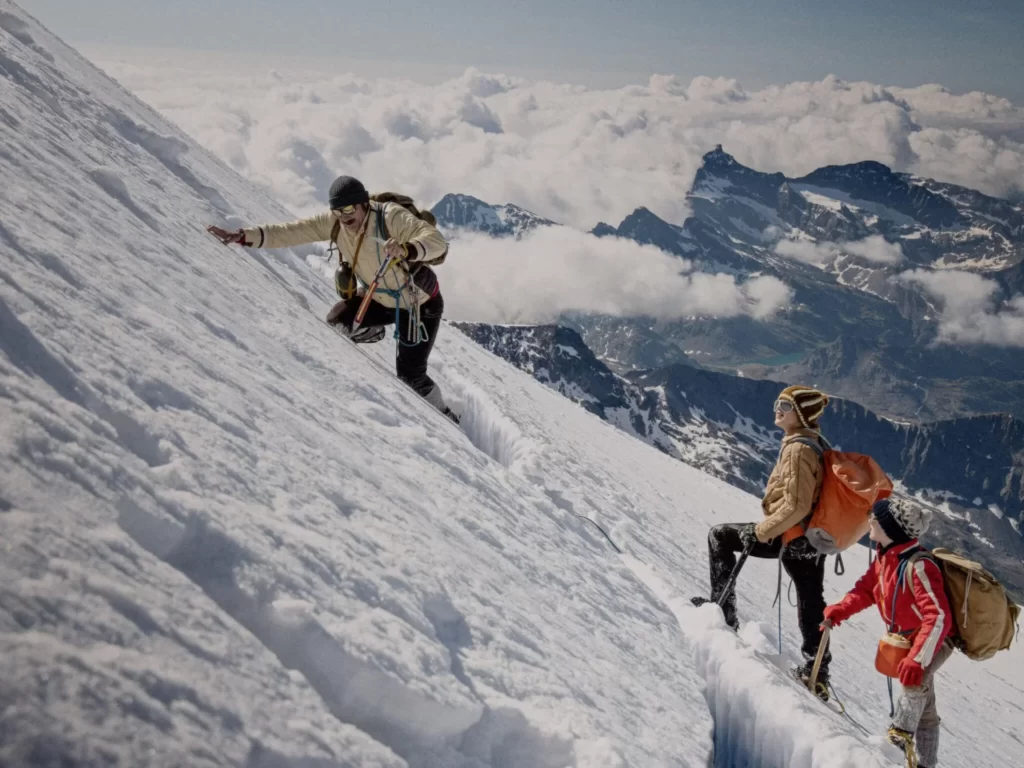
Pietro, Bruno, and Pietro’s dad on the glacier – still image from the movie The Eight Mountains
The rest of the book is a beautiful tale of how these relationships unfold over the next 20-30 years. The relationship between Pietro and his dad, between Pietro and Bruno, and also between Bruno and Pietro. Bruno considers himself a ‘mountain person’ and he never really leaves the area where he was born. Pietro on the other hand travels ferociously and ends up in the Himalaya’s. Pietro and his dad end up having a rough patch in their relationship, which leads to them getting estranged from each other.
But no matter what, all three individuals keep being drawn to the mountains where they first met each other.
The title of the book is Le Otto Montagne (the eight mountains), which revers to Buddhist cosmology where Mount Meru is at the center of the world. Pietro learns about this when he is visiting Nepal. Someone teaches him the story of eight smaller mountains that surround one enormous, central peak. Pietro learns that in life you have the choice to either explore all of these eight smaller peaks, or focus on ascending the enormous central peak.
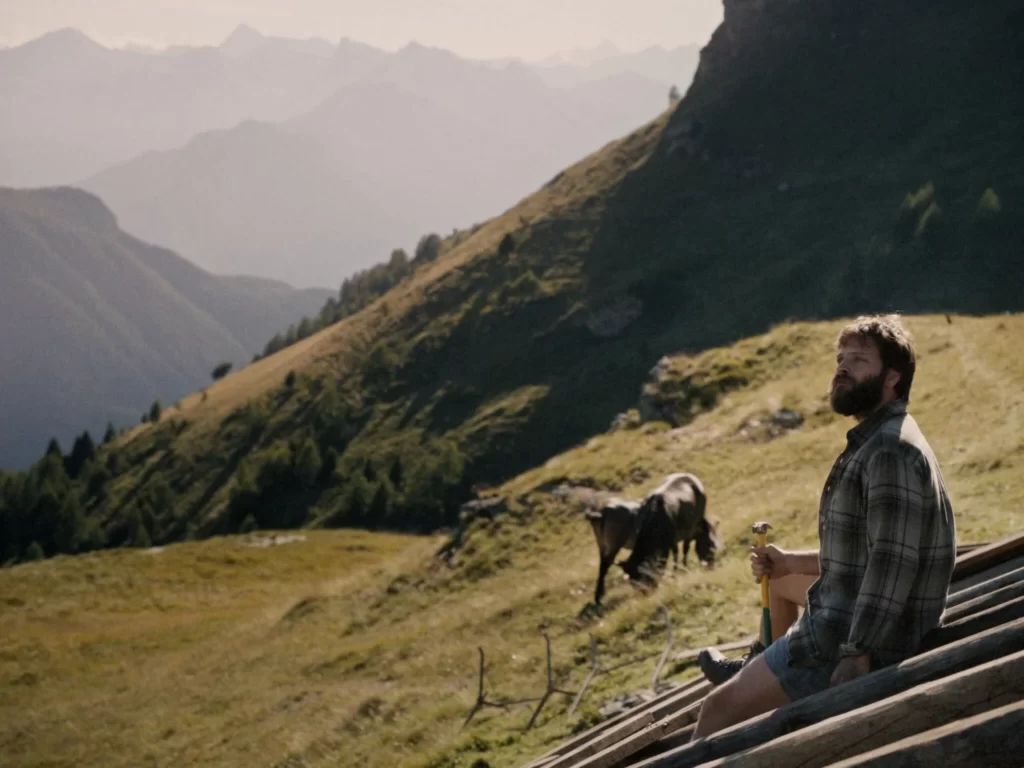
Adult Bruno, taking in the view of the mountains – still image from the movie The Eight Mountains
This allegory is woven in the book nicely and helps the reader to reflect on the life choices of all three individuals, and how it impacts their relationships. What I really enjoyed about this book is that it is very non-judgemental. It’s written exactly as life unfolds. The story feels very calm, natural, honest, and true, even though some very sad events occur. It’s a universal story that I think will spark reflection for many people. Everyone will be able to recognise various aspects of the different character’s lives.
Personally I identified with Pietro, as I am currently on my journey to explore the eight mountains. I am not the type of person that seems to be able to ascend the highest peak in the center at this stage of my life.
This high center peak can take many forms. Does it mean focusing on your one true talent and exploiting it to the max? Really going for it and grinding until you are successful? Versus trying many different avenues and never really reaching any heights? Or should you interpret the analogy in a more spatial sense? Like how some people stay in one place all their lives, while others roam around?
You can give your own twist to the analogy, which makes it so effective. If the analogy is the foundation of the book, then the relationships of the main characters are the top layers. There are so many different dynamics at play and they keep evolving as the story progresses. It would be too much to discuss the details of that in the document. But what is so beautiful is that there is no right or wrong in this book. Everything seems to happen as it happens. It makes it a very open and honest book, that sets the reader up for their own reflections about these very fundamental topics in life.
The movie
The 2022 movie remake of Le Otto Montagne is simply called The Eight Mountains. The book is adapted to screenplay by the Belgian director duo Felix van Groeningen and Charlotte Vandermeersch (with help of the book’s author Paolo Cognetti). It won several European film awards, most notably the 2022 Jury prize at the Cannes Film Festival.
Barring a few details, the movie largely follows the story of the book. The setting is still the Aosta Valley, which is beautifully captured by cinematographer Ruben Impens. Whilst the composition of the shots are very pleasing to the eye and prove the great effort of Impens, the texture of the film feels very natural. As if there is no interference of a professional camera crew at work, but it’s just you who is witnessing the scenery. Opposed to the stark contrasts and heavy shadows that you often see in movies to exploit the dramatic medium of cinema, this film felt had a very natural feeling to it. The true colours gave a friendly, real life feeling to the film that fitted the honest character of the story very well.
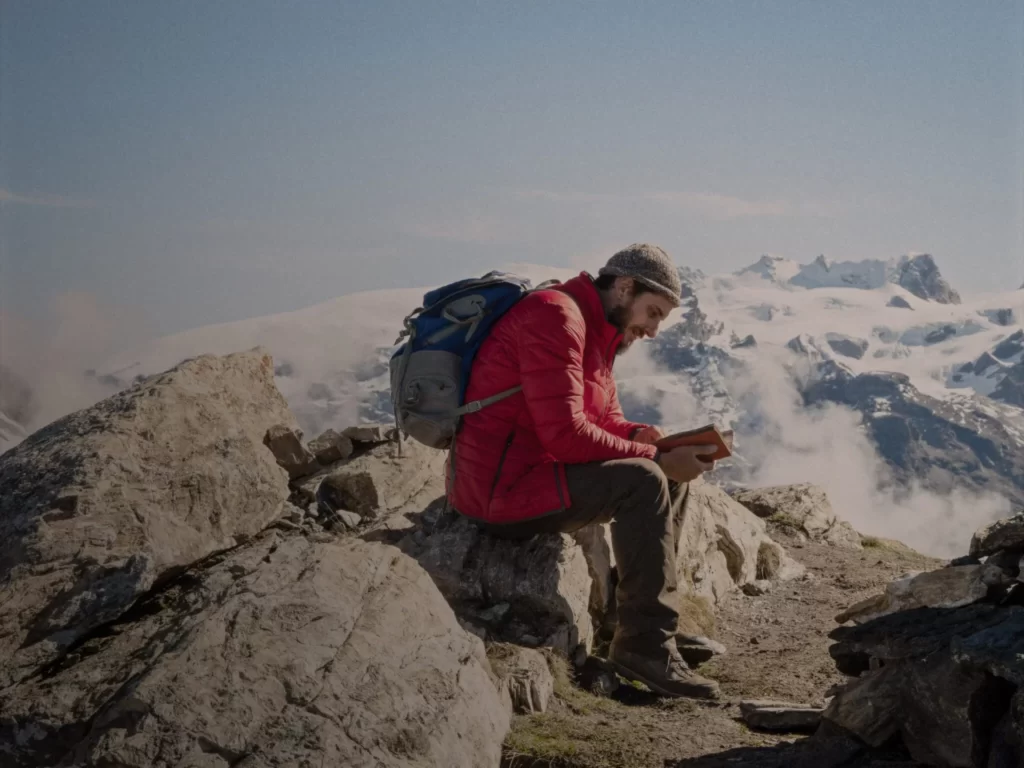
Still image from the movie The Eight Mountains
Interestingly, the movie is shot at a 4:3 academy aspect ratio. Impens said this about that choice:
‘We often see the characters stuck in their lives, so we found it interesting to have them stuck in the frame as well.’
I would like to add to that that it also works well in the context of the mountains. Their vertical alignment makes them fit into frame in a wonderful way, truly transposing that imposing feeling.
The movie has a long runtime of 2 hours and 27 minutes, which might seem like a long time at first, but it never truly feels like that. Yes, of course, I noticed that towards the end the people in the cinema started to change their posture at shorter intervals than at the start of the movie. It is true that 2.5h is a long time to sit still in a chair. But I think that the calm, realistic, and patient character of the movie would not have suited a shorter runtime.
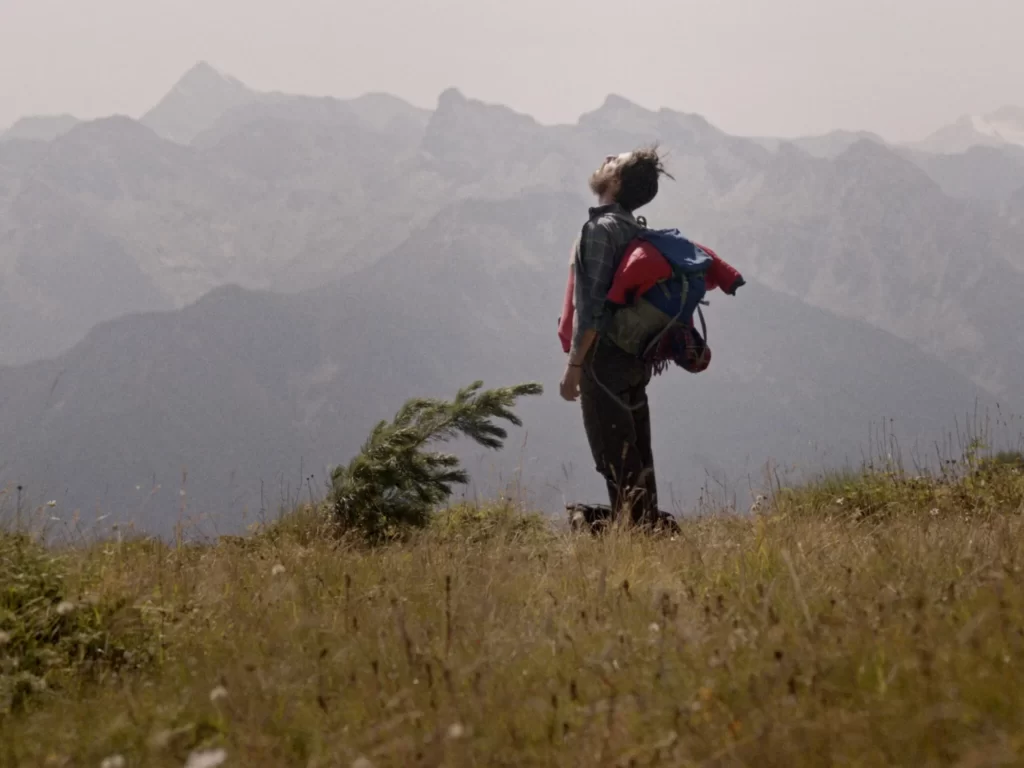
Adult Pietro, choosing a vertical orientation for his tanning moment – still image from the movie The Eight Mountains
Finally I wanted to share a few words about the tempo of the movie. For most of the movie the tempo feels very adequate. It is serene and harmonious. Except the start. It felt to me as if the movie could’ve done a better job at establishing the relationship between the Pietro and his father and between Pietro and Bruno during their youth. Compared to the book, this section felt more fragmentary instead of smooth and continuous. The filmmakers showed us glimpses of the relationships and expected us to extrapolate the rest. It’s understandable in the sense that the movie would have been over 5 hours long if they had taken the time to portray the start of these relationships as detailed as in the second half of the movie. But after watching the film I could not shake the feeling that the start felt slightly rushed and lacking a more natural progression.
PS I was happily surprised to recognise some of my favourite songs by the Swede Daniel Norgren in the movie. Later I found out that he supplied the full soundtrack to the movie. You can listen to it here if you want.
PPS one scene from the book that also made it into the book is so great that I cannot withhold it from you. The scene is set outside of a hut, high up the mountain. Pietro has invited some of his friends from Turin and they are drinking together with Bruno. The city people are idealising the rural area they are in and they are dreaming out loud about moving to this beautiful piece of nature. To which Bruno responds that city people have no clue what they are talking about. They are so far removed from what they call ‘nature’ that they had to come up with an abstract term to describe it. Bruno explains that ‘the mountain people’ don’t call it ‘nature’, but they simply describe what they see. Tree. Rock. Grass. Snow. It’s not abstract to them, it’s real. I thought was just a great little reflection 🙂